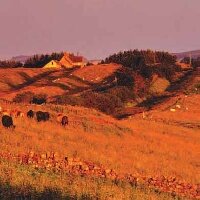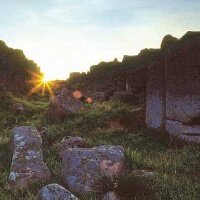Managing Earthwork Monuments


Introduction
This guidance manual has been prepared as part of the Proactive Earthwork Management Project on Hadrian’s Wall World Heritage Site. This is an European Union Heritage Laboratory Project funded under their Raphael Programme and supported by English Heritage, The Countryside Agency, Cumbria County Council, The National Trust, and Northumberland National Park.
The project was born out of the recognition that unlike ruins and standing buildings, the philosophy and methodology of conservation for archaeological earthworks is poorly-developed and not well understood. Often practice has been reactive rather than proactive, leading to costly repairs only after irreversible damage to the archaeological resource has already occurred. It was recognised that if archaeological earthworks in grassland were to be effectively managed there was a need to develop proactive, low-cost, minimal intervention techniques to prevent the onset of erosion and archaeological damage, whilst accommodating other values such as nature conservation, agricultural use, aesthetic appeal and recreation.
In January 2000, the project commenced with the principal aims of;
- Assessing the condition of parts of the Hadrian’s Wall World Heritage Site under grassland management,
- using Hadrian’s Wall to develop methods of repairing damage,
- using Hadrian’s Wall to develop methods of proactive management to prevent damage,
- and through this guidance manual and a series of seminars and bulletins disseminating that knowledge to a wider audience.
The production of this guidance manual has drawn from a wide range of sources. It has involved the review of good practice on Hadrian’s Wall and at other World Heritage Sites and archaeological sites in the United Kingdom, as well as the discussion of techniques with individual experts and organisations. Available literature has been reviewed, principal works include the Lowland Grassland Management Handbook (Jefferson and Croft, 1999), Upland Grassland Management Handbook (English Nature, 2001), Historic Scotland’s Technical Advice Notes and English Heritage’s Landscape Advice Notes.
Aims
The aims of the guidance manual can be summarised as follows:
- To help heritage managers, land managers and advisers to achieve best practice for archaeological earthwork preservation in a grassland management setting.
- To provide guidance on the various management options available to the manager and adviser.
- To assist in the choice between these options.
- To provide basic practical information about procedures, methods, equipment and the ways to achieve good management.
Scope
This guidance manual covers the conservation and repair of archaeological earthworks in grassland management. Its focus is those grasslands that have remained largely undisturbed as unimproved or semi-improved permanent pasture. These are characteristic of the study area, Hadrian’s Wall, where the best surviving archaeological earthworks tend to be in these land-uses.
However, the methods described in the manual will be of use in other grassland situations. The manual has been prepared with a review of methods in the United Kingdom and some of the advice is specific to this country (e.g. wildlife legislation). However, the guidance manual is relevant to the management of archaeological earthworks in grassland settings in similar climatic regions of north-west Europe and elsewhere in the World.
Target Audience
This guidance manual is directed at organisations and individuals managing archaeological earthworks in grassland settings for their preservation and those responsible for advising them.
Use
The partner organisations involved in the production of this guidance manual are eager to see the information disseminated as widely as possible so that archaeological earthworks are managed appropriately. For this reason they are content for users to copy parts of the handbook for educational purposes and progression of works for the conservation of archaeological earthworks provided the source is acknowledged.
For hard copies please contact Karen Parker at the Hadrians Wall Co-ordination Unit Tel: E-mail: .
What's New?
-
The National Heritage List for England is now live on the English Heritage website.
-
Welcome to the HER21 page. This page offers access to the full suite of HER21 project reports.
